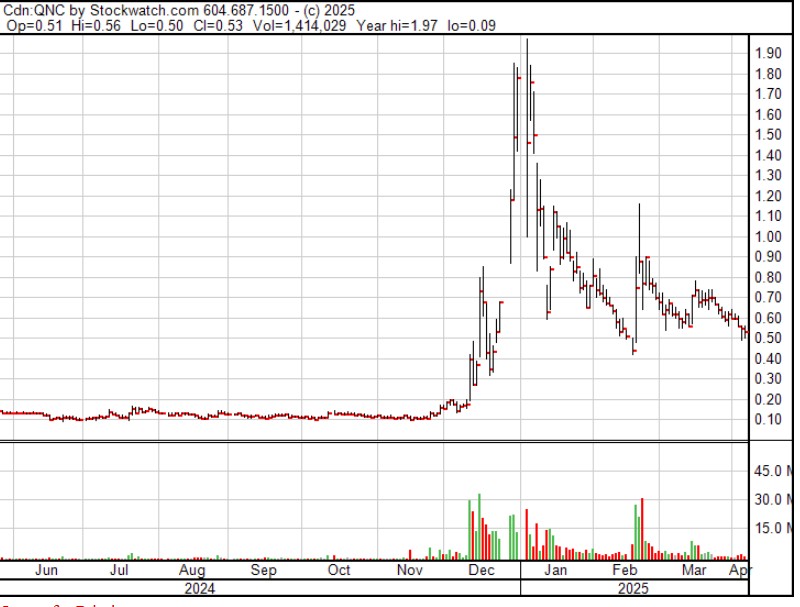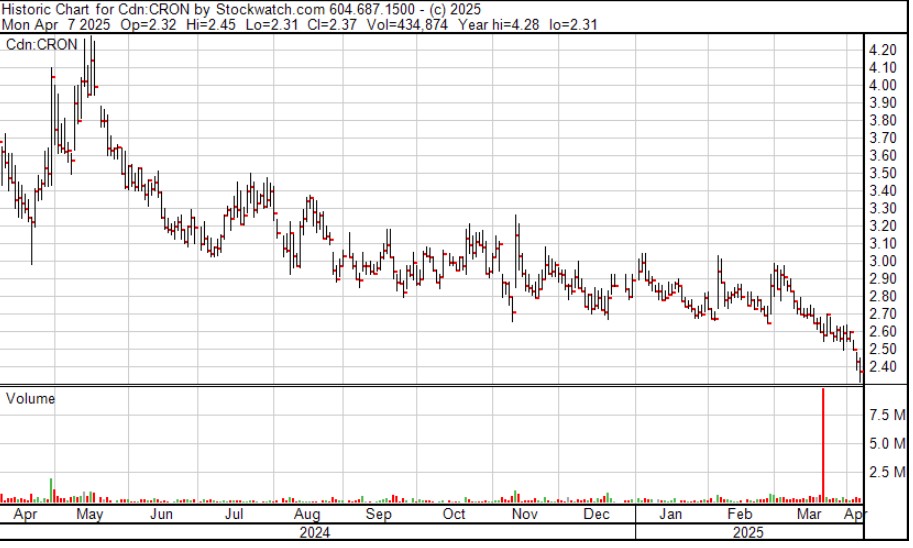It is not uncommon for microcap investors to chase momentum and “stories” that latch on to a popular trend or topic. Over the years I have seen this with commodity rallies in gold or oil, world-class discoveries of other metals and minerals, legalization of Cannabis in Canada (and the two years leading up to it), cryptocurrency mining, blockchain, and tech / internet stocks from 1998 to 2000 (when they crashed hard).
With commodity discoveries, you will typically see “area plays” evolve with microcap stocks. This occurred with diamond exploration in Canada when Ekati (Diamet) was discovered in 1991, and with a giant nickel discovery at Voisey’s Bay in 1993. Not only did the public companies that made the discovery have huge gains, but the area-plays around these discoveries attracted dozens of microcap companies and thousands of new investors / speculators. The public companies raised enormous amounts of money and almost every one of them burned through it all without making another economic discovery.
In late 2024 we have seen this wild / blind speculation driving Bitcoin and dozens of other crypto-currencies. The huge majority of these are completely worthless and nothing more than a vehicle from which the “masses” can legally gamble on something. For fear of missing out, investors (speculators and gamblers) jump on board not even knowing what they are buying. But if the momentum is there, it gives them blue-sky hope of hitting it big and greed fuels the speculation – until it typically comes crashing down.
When Google (Alphabet) announced December 9th, 2024 that they were developing Willow, a new quantum computing chip, investors of all sizes stood up and took notice. Google claims Willow can solve a problem in 5 minutes that would take the world’s fastest supercomputer 10 septillion years to complete. Clearly a shocking advancement in the tech world – if and when it is fully commercialized – which will likely take years.
But immediately wild speculation started about quantum computing being able to break the encryption of bitcoin or other cryptocurrencies. Not to mention all kinds of other tech that depends upon traditional encryption. This also threw a spotlight onto software developed around anything “quantum”. And in the microcap world, there were only a few public companies involved with this industry. Thanks to blind speculation, herd mentality, supply and demand, and stock promoters, these stocks gained anywhere from 100% to 1000% in weeks.
Case in point was a microcap called Quantum Emotion (QNC $0.53 CDN) on the TSXV in Canada. This stock was all but ignored throughout 2023 and 2024 (stuck near 10 cents) until the Google announcement. Between December 9th and 31st it went from 20 cents to $1.90 !! A gain in excess of 800% !

This was the classic example of buying a stock simply because everyone else was. People not only want to gamble, but they want to be part of the “herd”. Above $1 the market valuation of QNC was close to $200 Million?! Late November they raised $750,000 at 10 cents by selling 7.5 million shares (in 4 months that cheap stock would flood the market).
In their financials released late August for the period ending June 30th, they owned NO tangible assets and while they had about $1/2 million in cash and receivables, they also owed $300k. So other than owning some intellectual property on software, they owned next to nothing and had ZERO revenue (burn rate that quarter was almost $3/4 million).
In the summer of 2024 at 10 cents, the company oddly had a market cap of $14 million. Based on what?? On January 2, 2025 thanks to Google’s quantum news, investors were still buying well above $1 where that market cap was well above $200 Million. This was insane BUT demonstrated how microcap investors were willing to speculate blindly – simply because a stock had momentum, plenty of trading volume, and was “trendy”.
I have witnessed this nonsense for 40 years and 99% of the time, this scenario never ends well for those who bought late and decided to “hold”. For those who bought stock early near 10 to 30 cents, they are laughing as they exploited those investors buying at higher levels (the greater fool theory). The same held true for those who bought into the 10 cent financing. They will have made a TONNE of money – and were likely shorting the stock above $1 (they could replace their paper with that 10-cent financing paper).
BY COMPARISON – Consider a Company like Cronos (CRON:TSX $2.40 and NASDAQ)
Cronos is in the Cannabis industry which has now fallen out of favor with investors for several years. But Cronos partnered with Altria Group in 2018 when Altria invested USD $2.4 Billion for a 45% stake. While the Cronos burn rate has been high for years, like most everyone in the cannabis industry, Cronos still has well over $1 Billion in cash and receivables (with minimal debt), significant tangible assets, and generates over $150 million annually in revenue.
Yet, near a share price of $2.40 CDN, the valuation of Cronos is not even the value of their cash / investments. This means they have a negative enterprise value (EV) and trade at a very deep discount to their net asset value (NAV).

While QNC is a microcap and CRON is a small cap, this is a glaring example of how irrational and inexperienced microcap investors can be. You have one company with next to nothing but hype and pipe-dreams trading at a valuation over $200 Million (and plenty of stock buyers even when it was up 500% in weeks) and you have another company that cannot even get recognition for the business itself (because it trades below its cash and NAV).
The Dangers of Blind Speculation
When investors buy into a stock simply because it’s going up, without considering the underlying company or its prospects, they’re essentially gambling. This blind speculation can lead to devastating losses when the bubble bursts, as it inevitably does.
The Importance of Value Investing
A more prudent approach to microcap investing is to focus on value. This means identifying companies that are undervalued by the market, have strong fundamentals, and possess the potential for long-term growth. By investing in these overlooked companies, investors can reduce their risk and increase their chances of success.
